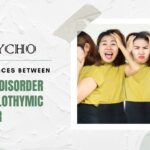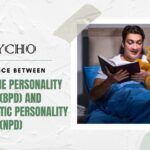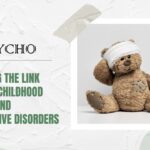ASD and ADHD are neurodevelopmental diseases that affect behavior, social interactions, and daily tasks. They’re different diseases with different symptoms, diagnoses, and treatments. ASD, a complicated developmental disease, makes it hard to get along with others, communicate with them, and repeat actions. ASD sufferers may have problems understanding social signs, making eye contact, and building meaningful connections. They may repeat things or be particularly interested in specific topics. Signs of ASD can range from moderate to severe. ASD is commonly addressed with early intervention, behavioral treatment, and classroom support.
ADHD, on the other hand, usually impacts attention and mood control. It’s characterized by impulsivity, inattention, and hyperactivity. ADHD can make it hard to focus, organize, and follow orders. They may appear unable to sit still or wait their turn. ADHD symptoms can influence your performance in school, job, and life. Behavioral therapy, medicines, and training are typically used combined to manage symptoms.
Social issues are handled differently in ASD and ADHD. People with ASD struggle to grasp and follow social norms. However, ADHDers behave on impulse and have difficulties paying attention, making them difficult to get along with. People might feel alone in both cases but for different reasons.
ASD sufferers exhibit repetitive, limiting behaviors. Doing the same thing again and over (like moving your hands) or being highly concentrated are some of these habits. ADHD is not defined by repetitive behavior. Different thinking styles distinguish ASD and ADHD. ASD people may be adept at or bad at identifying patterns or paying attention to little details. ADHD, on the other hand, affects impulse control, working memory, and time management.
In conclusion, Autism Spectrum Disorder (ASD) and Attention-Deficit/Hyperactivity Disorder (ADHD) have certain symptoms but are distinct neurological illnesses. ASD is largely about social interaction, communication, and repetitive behaviors, whereas ADHD is about attention, impulsivity, and activity.
Also Read: Geriatric Psychiatry: 8 Things You Should Know
|
S.No. |
Aspects |
Autism Spectrum Disorder (ASD) |
Attention-Deficit/Hyperactivity Disorder (ADHD) |
|
1 |
Diagnostic Category |
Neurobehavioral Disorder |
|
|
2 |
Core Symptoms |
Social communication difficulties and repetitive behaviors |
Inattention, hyperactivity, impulsivity |
|
3 |
Diagnostic Criteria |
Social and communication deficits, restricted, repetitive behaviors |
Symptoms related to attention, hyperactivity, impulsivity |
|
4 |
Subtypes |
Includes subtypes like Asperger’s syndrome, PDD-NOS |
Subtypes based on predominant symptoms (inattentive, hyperactive-impulsive, combined) |
|
5 |
Onset |
Symptoms typically become apparent in early childhood |
Symptoms recognized in childhood, may persist into adulthood |
|
6 |
Social Interaction |
Significant difficulties in social interaction, understanding social cues, and forming relationships |
Social difficulties primarily related to impulsivity and inattention |
|
7 |
Emotion Recognition |
Difficulty recognizing and understanding emotions in others |
Generally less difficulty in recognizing emotions |
|
8 |
Theory of Mind |
Often struggles with theory of mind, understanding others’ perspectives |
Typically has a typical theory of mind (understanding others’ perspectives) |
|
9 |
Verbal Communication |
Some individuals may have delayed or atypical verbal communication |
Typically no significant delays or atypical communication |
|
10 |
Attention Difficulties |
Typically has attention difficulties |
Hallmark feature is inattention |
|
11 |
Hyperfocus |
May not exhibit hyperfocus behavior |
Some individuals can hyperfocus on tasks of interest |
|
12 |
Repetitive Movements |
Characterized by repetitive motor movements (e.g., hand-flapping) |
Repetitive movements are not a core feature |
|
13 |
Repetitive Interests |
Often has intense, restricted interests |
Interests may vary and are not necessarily intense |
|
14 |
Hyperactivity |
Hyperactivity is not a core feature |
Hyperactivity is a core symptom |
|
15 |
Impulsivity |
Generally not characterized by impulsivity |
Impulsivity is a key feature, leading to hasty decisions and actions |
|
16 |
Executive Functioning |
May have difficulties with executive functioning, including planning, organizing, and flexibility |
Often has executive function difficulties related to inattention and impulsivity |
|
17 |
Communication |
Communication difficulties, including non-verbal communication challenges |
Typically less pronounced communication difficulties |
|
18 |
Sensory Sensitivities |
Often has sensory sensitivities or sensory processing differences |
Sensory sensitivities are not a core feature |
|
19 |
Speech Delay |
Some individuals may have speech delays or speech peculiarities |
Typically no speech delays or peculiarities |
|
20 |
Eye Contact |
May have difficulty with eye contact |
Typically does not have significant eye contact issues |
|
21 |
Social Reciprocity |
Challenges with social reciprocity, such as taking turns in conversation |
May have difficulty with social reciprocity |
|
22 |
Restricted Interests |
Displays restricted interests, often focused on specific topics |
Interests may vary widely and are not necessarily restricted |
|
23 |
Response to Changes |
May react strongly to changes in routines or environments |
May struggle with transitions and changes in tasks |
|
24 |
Speech Patterns |
Speech patterns may be repetitive or echolalic (repeating others’ words) |
Typically has regular speech patterns |
|
25 |
Motor Stereotypies |
May exhibit motor stereotypies (repetitive, purposeless movements) |
Motor stereotypies are not a core feature |
|
26 |
Intellectual Functioning |
Wide range of intellectual functioning, from intellectual disability to high IQ |
Wide range of intellectual functioning, not specific to ADHD |
|
27 |
Special Interests |
Special interests are a common feature and may be intense |
Special interests are not a core feature |
|
28 |
Interventions and Therapies |
Applied Behavioral Analysis (ABA), speech therapy, occupational therapy, and social skills training are often used |
Behavioral interventions, psychoeducation, and medication management are common |
|
29 |
Medication Use |
Medication is primarily used for comorbid conditions or target-specific symptoms |
Medication is commonly used to manage symptoms |
|
30 |
Autism Severity Levels |
ASD can vary in severity, from mild to severe |
ADHD severity is typically categorized as mild, moderate, or severe |
|
31 |
Social Initiations |
May have difficulty initiating social interactions |
Typically initiates social interactions with peers |
|
32 |
Repetitive Play |
May engage in repetitive play or routines |
Repetitive play is not a core feature |
|
33 |
Neuroimaging Findings |
Neuroimaging studies show differences in brain connectivity and regions |
Neuroimaging findings often show structural and functional brain differences |
|
34 |
Intellectual Disability |
Some individuals may have comorbid intellectual disability |
ADHD is not typically associated with intellectual disability |
|
35 |
Genetic and Environmental Factors |
Genetic and environmental factors play a role in ASD |
Genetic and environmental factors contribute to ADHD |
|
36 |
Medication Classes |
Medications for comorbid symptoms or conditions are commonly prescribed |
Medications include stimulants (e.g., methylphenidate) and non-stimulants (e.g., atomoxetine) |
|
37 |
Comorbid Conditions |
Often comorbid with conditions like anxiety disorders, depression, and sensory processing disorder |
Common comorbid conditions include oppositional defiant disorder, conduct disorder, and mood disorders |
|
38 |
School Performance |
May have varying school performance, with strengths and challenges |
Academic performance is often impacted by inattention and impulsivity |
|
39 |
Social Communication Therapy |
Often benefits from social communication therapy |
May not typically receive social communication therapy |
|
40 |
Speech Articulation Issues |
May have speech articulation issues related to language and communication difficulties |
Speech articulation issues are not a primary concern |
|
41 |
Visual Thinking |
May engage in visual thinking and may excel in visual-spatial tasks |
Visual thinking is not a defining characteristic |
|
42 |
Executive Dysfunction |
Often experiences executive dysfunction, particularly in planning and organization |
Executive dysfunction may manifest as disorganization and forgetfulness |
|
43 |
Developmental Milestones |
May achieve developmental milestones at different rates |
Developmental milestones are generally on track |
|
44 |
Special Education Services |
May receive special education services or an Individualized Education Plan (IEP) |
May receive accommodations but may not require an IEP |
|
45 |
Peer Relationships |
May struggle with peer relationships and making friends |
Peer relationships may be challenging due to impulsivity and inattention |
|
46 |
Sensory Overload |
Prone to sensory overload and may require sensory accommodations |
Sensory overload is not typically a concern |
|
47 |
Intense Interests |
Often has intense and specialized interests |
Intense interests are not a hallmark feature |
|
48 |
Genetic Syndromes |
Can be associated with certain genetic syndromes (e.g., Fragile X, Rett syndrome) |
Not typically associated with specific genetic syndromes |
Also Read: How Perception Works: Types, Processes, Selections, Etc.
Frequently Asked Questions (FAQS)
Q.1 What is the main difference between Autism Spectrum Disorder (ASD) and Attention-Deficit/Hyperactivity Disorder (ADHD)?
ASD and ADHD are neurodevelopmental disorders. ASD largely affects social communication, including social signals and conventional interactions. It comprises repetitive actions and limited interests. ADHD symptoms include inattention, hyperactivity, and impulsivity. Both diseases affect everyday life, although their essential characteristics and diagnostic criteria differ.
Q.2 Can a person have both ASD and ADHD simultaneously?
ASD and ADHD can coexist. This is called comorbidity. Each condition is distinct. Due to the requirement to treat both ailments, comorbidities can complicate diagnosis and therapy.
Q.3 How are ASD and ADHD diagnosed?
Qualified medical specialists examine ASD and ADHD patients. Social communication, repetitive habits, and sensory sensitivity are assessed to diagnose ASD. ADHD diagnosis involves analyzing inattention, hyperactivity, and impulsivity and their effects on everyday living. DSM-5 provides diagnostic criteria.
Q.4 What treatments are available for ASD and ADHD?
Due to their differences, ASD and ADHD treatments differ. Behavioral, linguistic, social skills and sensory integration treatments can treat ASD. ADHD therapy frequently includes psychoeducation, medication, and behavioral interventions. ADHD can be treated with methylphenidate or atomoxetine. Individualized treatment plans should address individual needs.
Q.5 Are there any known causes of ASD and ADHD?
Genetic and environmental variables may induce ASD and ADHD, according to the study. Certain genes increase ASD risk. Prenatal problems and toxic exposure may increase ASD risk. Genetics and brain structure and neurotransmitter abnormalities are considered to cause ADHD.









